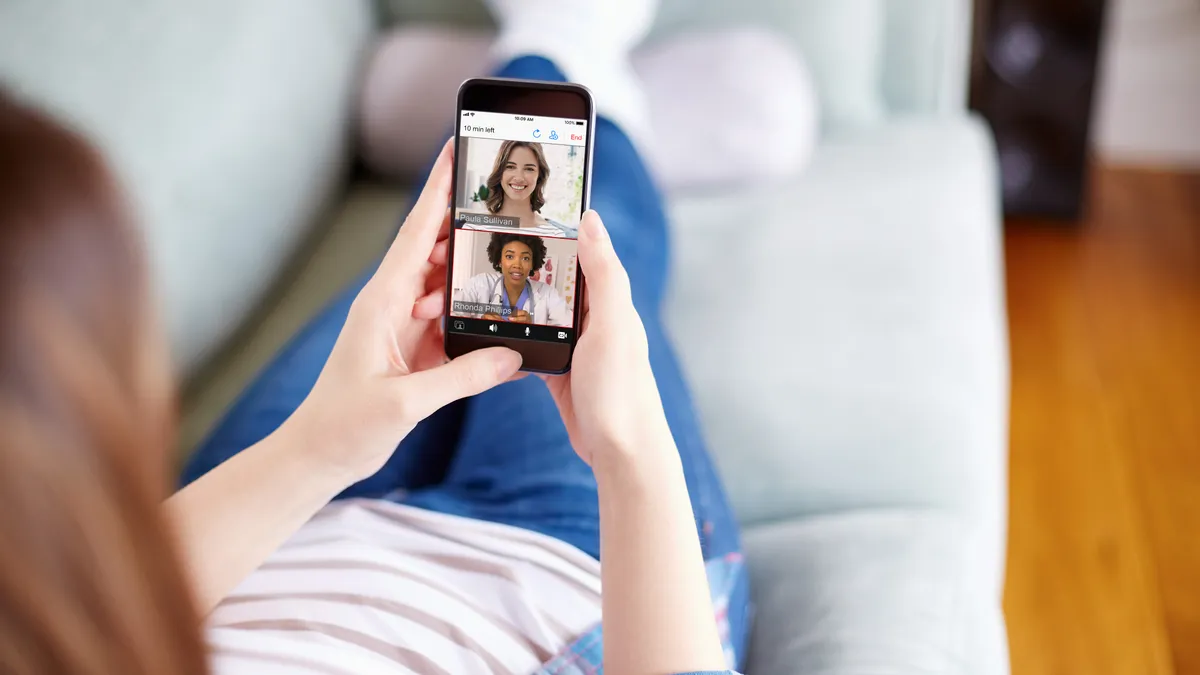Dive Brief:
- Doctors and consumers expect to use virtual care more often after COVID-19 than they did before, according to a new survey from telehealth vendor Amwell, hinting at the long-term potential of the virtual care model in healthcare.
- Prior to the pandemic, the majority of virtual visits were for on-demand urgent care. But this year, the volume of virtual specialty and scheduled visits outpaced urgent care, suggesting telehealth is becoming normalized across more fields and use cases. Only about 21% of consumers had a virtual visit for on-demand urgent care visit this year. By comparison, 54% had a scheduled visits with their primary care physician.
- Telehealth use spiked during 2020, with 22% of consumer and 80% of physician respondents to Amwell's survey having a telehealth visit this year. That's up from 8% and 22%, respectively, in 2019.
Dive Insight:
Telehealth adoption snowballed in the early months of the pandemic as wary patients turned to digital channels for needed healthcare. However, virtual care use began to moderate around June as states began opening their lockdowns and more patients returned to in-person care.
It's still unclear how much telemedicine utilization will shift in the absence of a pandemic. The majority of experts think virtual care use is likely to keep falling slightly as COVID-19 cases do, but it's already become normalized in the healthcare delivery system and will persist at much higher levels. Consultants at McKinsey estimate an eventual $250 billion of all healthcare spend could be digitized.
Amwell commissioned online market research firm Dynata to survey more than 2,000 adults and consultancy M3 Global Consulting to survey 600 physicians in June to measure patient and doctor use of and satisfaction with telehealth.
This year, 42% of consumers who had a virtual visit had a scheduled appointment with a specialist they knew, while another 13% had a telehealth visit with a new specialist, Amwell found. And specialists were more willing to use telehealth in 2020, with reported willingness doubling for a handful of high-volume fields like radiology, cardiology and surgery.
About 59% of consumers who had used a video visit had their first video visit during the pandemic, the survey found. That number swelled among seniors, with 86% of consumers above the age of 65 having their first telehealth experience during COVID-19.
Nearly all, 96%, of physicians said they were willing to use telehealth, with a majority saying they'd use it for prescription renewals (94%), regular chronic care management check-ins (93%) and follow-up appointments after surgery or hospitalizations (71%).
A fourth of consumers whose primary care physician doesn't offer telehealth would be willing to switch to a doctor who does Amwell found.
Despite growing acceptance, barriers to telehealth use still persist. Almost three-fourths of physicians say technology challenges have been a roadblock to offering virtual care at their organization, followed by uncertainty around reimbursement (64%) and worries about the quality of virtually delivered care (58%).
Boston-based Amwell is one of a growing number of vendors looking to capitalize on COVID-19 tailwinds for virtual care, giving rise to a flurry of major deals, IPOs, large investments and other activity. Digital health funding including telehealth in the third quarter could surpass $8 billion, and is estimated to break second-quarter records. For its part, Amwell went public in August with a $100 million investment from Google.














